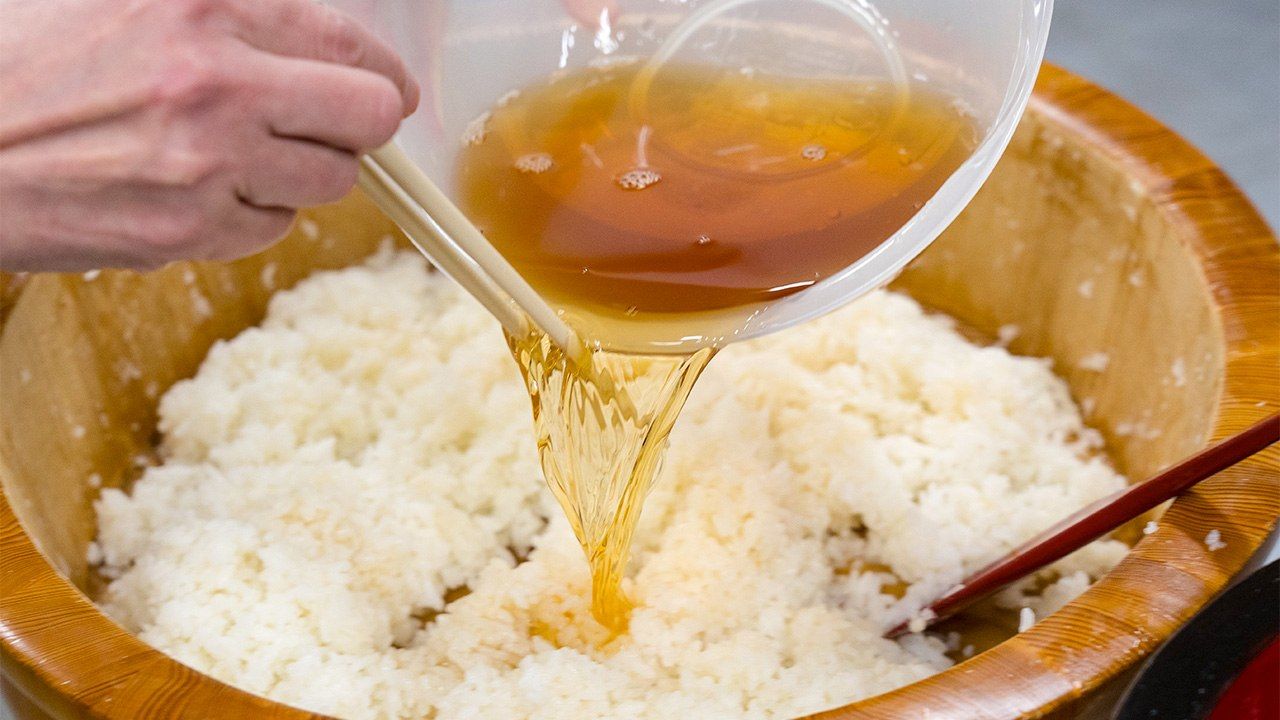
Japanese Agriculture for a New Era
Black Gold in a Bottle: Kagoshima’s Kurozake Packs Umami Punch
Food and Drink Culture History- English
- 日本語
- 简体字
- 繁體字
- Français
- Español
- العربية
- Русский
Preserving a Culinary Tradition
Dark in hue, kuroki is one of several types of sacred sake offered to the deities at Ise Jingū and other venerable Shintō shrines since ancient times. Along with its spiritual importance, though, it has a reputation in the kitchen as an umami-rich seasoning that lends a savory touch to an array of traditional dishes.
It is customarily made by adding ash derived from kusagio, a flowering plant indigenous to Japan and other part of Asia, to a cloudy, light-tinted sake called shiroki (literally “white sake”). Among the few breweries still producing kuroki is Kagoshima Prefecture-based Higashi Shuzō. Its main label is called Kurozake, which is written with the same two kanji (黒酒) as kuroki, meaning “black” and “sake.” The brew caught my attention for its use by some manufacturers of the savory fish-based delicacy satsuma-age.
Seasoned and fried fish cakes, satsuma-age are a staple of the popular hot pot dish oden. They are generally flavored with salt, sugar, and mirin, a sweet cooking wine that boosts umami. Food manufacturers in Kagoshima where the dish originated typically rely on regionally brewed mirin, but I was surprised to discover that several use kuroki produced by Higashi Shuzō instead. Curious, I headed to southern Kyūshū to learn more about this brewer’s Kurozake label.
Speaking with fourth-generation head of the distillery Fukumoto Fumio, I learned that locally brewed mirin is called jizake, a term more commonly used for regional varieties of refined sake. Fukumoto acknowledged the confusion for outsiders, saying, “That’s why we stress that our label is called Kurozake.”
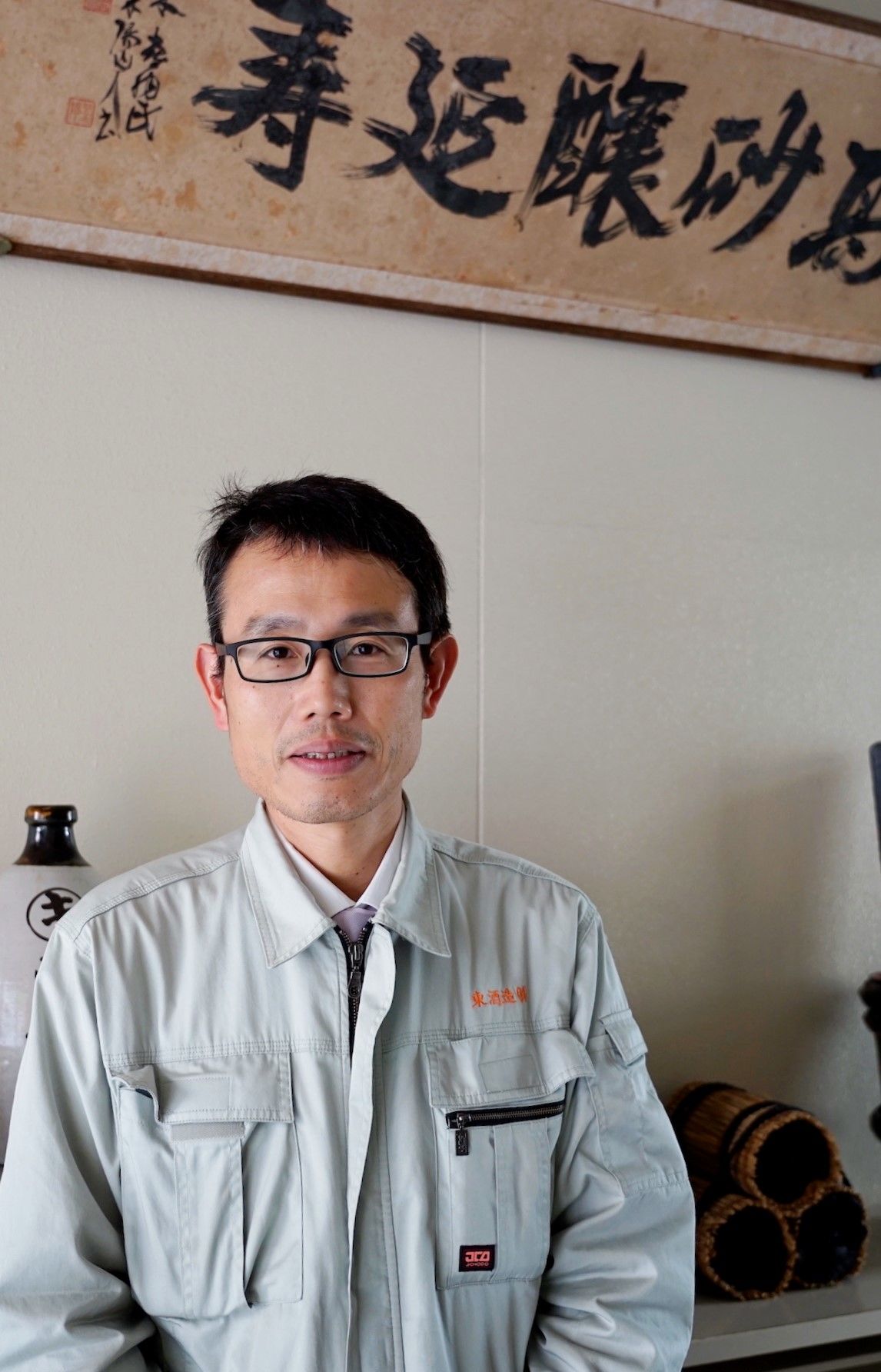
Higashi Shuzō president Fukumoto Fumio. (© Ukita Yasuyuki)
Japanese sake falls into two categories, himochizake or akumochizake, with the majority of nihonshu being the former. The term himochizake incorporates the kanji for “fire” and denotes that a sake has been pasteurized at low temperature, a preservation method that developed during the Edo period (1603–1868). In contrast, akumochizake, or ash-preserved sake—kuroki being one example—rely on a much older technique, dating back some 1,200 years, of mixing ash into the brewing mash. Traditionally, much of the local sake brewed in Kagoshima and other parts of Kyūshū used the older preservation method. It was customarily drunk as part of New Year celebrations, although some people did enjoy it as their daily tipple. Nowadays, though, akumochizake is generally used for cooking.
Akumochizake, such as Higashi Shuzō’s Kurozake, is made with unpolished table rice, which is higher in protein than sake rice, producing more amino acids and a rich umami flavor. Not being pasteurized also means that the enzymes in the sake remain active, which combined with the alcohol content make akumochizake effective for tenderizing, improving flavor penetration, and removing unpleasant smells of meat and fish while also enhancing the aroma of ingredients. While it shares some qualities with mirin, the two differ in that mirin is made with glutinous rice, kōji mold, and shōchū, and as it does not undergo its own fermentation, it contains fewer enzymes and organic acids compared to akumochizake.
Sake brewing flourished in Kagoshima during the Edo period, but gradually declined as shōchū production grew in importance. Today, fewer than 10 breweries spread across the three prefectures of Kagoshima, Kumamoto, and Shimane still make akumochizake, with Higashi Shuzō being the only one that does not use pasteurization during any step of the brewing process. This sparsity of producers presents a real risk to the preservation of the ancient sake. In fact, production at the brewery was halted during World War II due to scarcity of rice and was only revived in 1955 through the efforts of company founder Higashi Kinai.
At the time, the brewery’s main product was a kuroki variety sake called Takasago no Mine. The brand is still popular with locals, although Higashi Shuzō plans to retire it eventually. Looking to improve its product, the brewery began developing its Kurozake brand in 1990, increasing the amount of rice used and other approaches to double the amino acid content.
Amino Power
The brewing process for Kurozake resembles the template for other types of sake, starting with inculcating steamed rice with a special mold to form rice kōji. A yeast starter (shubo) consisting of yeast, lactic acid, and water is added to the rice kōji in three stages (sandan-jikomi) to ensure that the resulting mash (moromi) ferments uniformly. Characteristic of akumochizake, ash is added to the mash before it is pressed, with quantities of alcohol and sugar mixed in at the end to bring the product in line with quality standards.
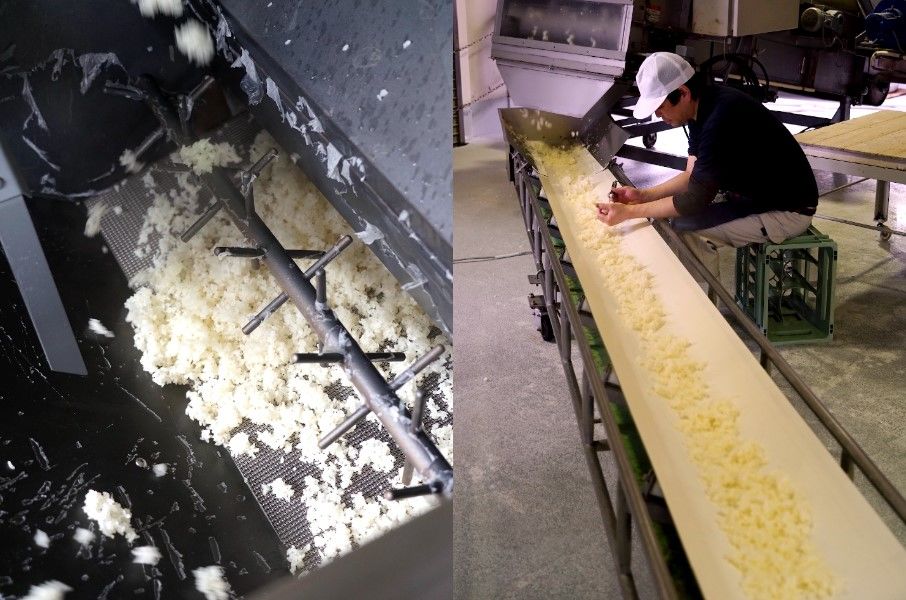
Freshly steamed rice (left) is monitored to determine the appropriate temperature for forming rice kōji, which changes depending on season and weather. (© Ukita Yasuyuki)
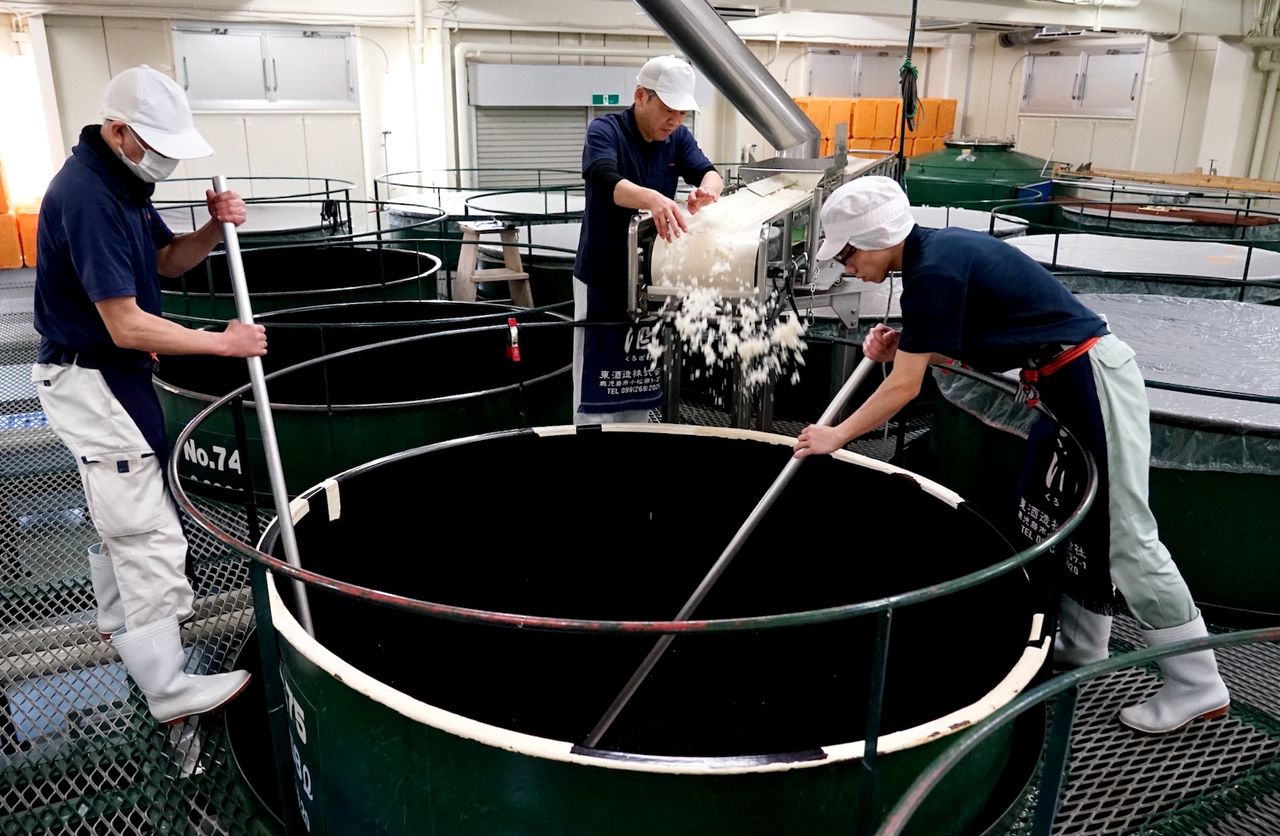
Staff mix ingredients. (© Ukita Yasuyuki)
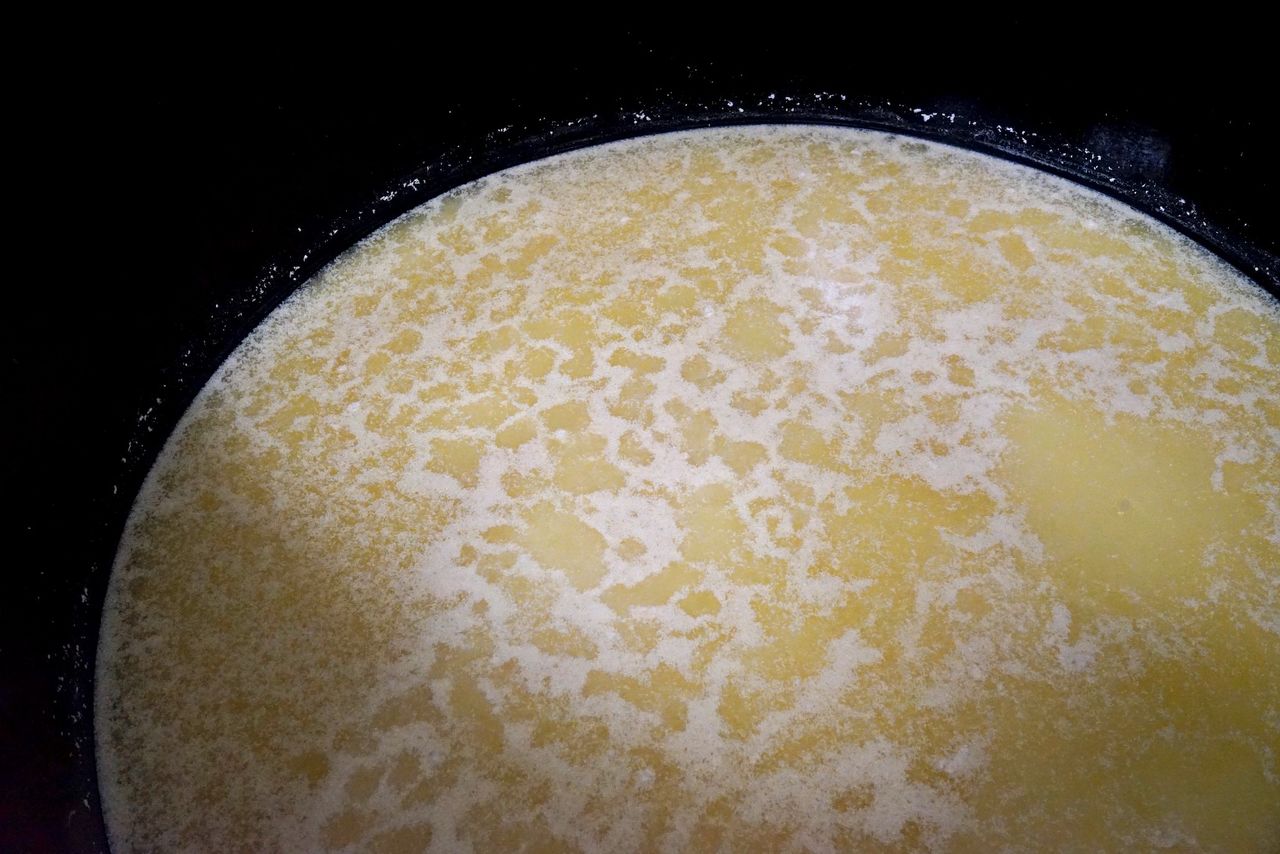
Bubbles appear on the surface of the fermenting moromi. (© Ukita Yasuyuki)
It should be noted that Higashi Shuzō uses a variety of mold called yellow kōji in its production. Common in sake brewing in most parts of Japan, it is ill suited to warmer regions like Kyūshū as its sensitivity to higher temperatures can inhibit the formation of citric acid, potentially affecting flavor and other aspects of the drink. Kyūshū breweries typically use hardier strains of kōji developed in the early 1900s for sake and shōchū, but Higashi Shuzō continues to rely on yellow kōji out of the desire to preserve its traditional brewing methods. Air conditioning ensures that an appropriate room temperature is maintained, although Fukumoto notes that climate change poses a growing risk to the brewery, as well as local sake production as a whole.
The brewery produces its own wood ash at a separate facility. Pieces of Japanese oak (kashi) are burned slowly over three hours, and the resulting ash is filtered with water to form a transparent lye-rich liquid called aku. Mixed with the mash, the strong alkaline solution acts as a preservative by raising the pH of the sake.
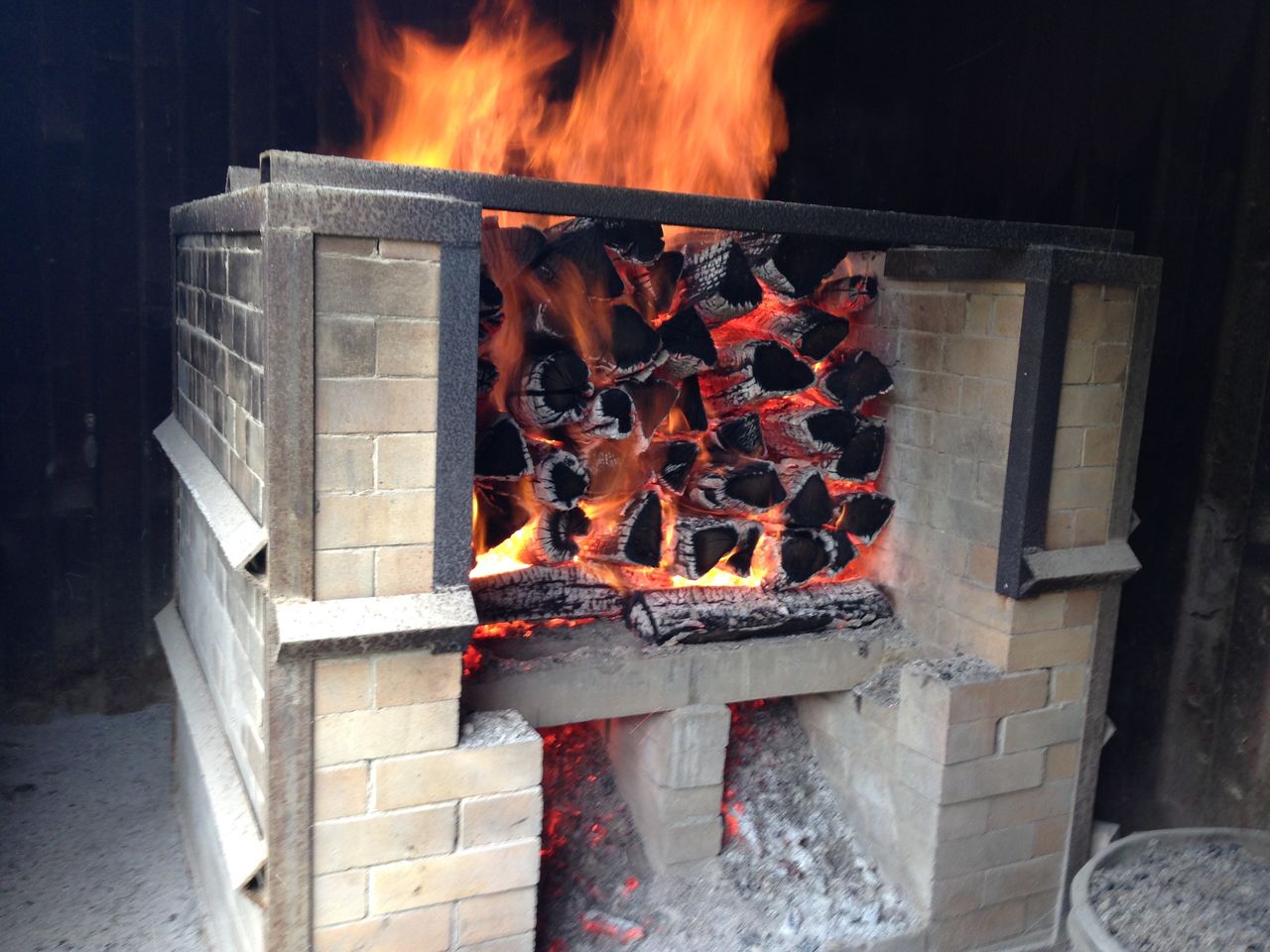
Japanese oak is burned in a kiln. (© Higashi Shuzō)
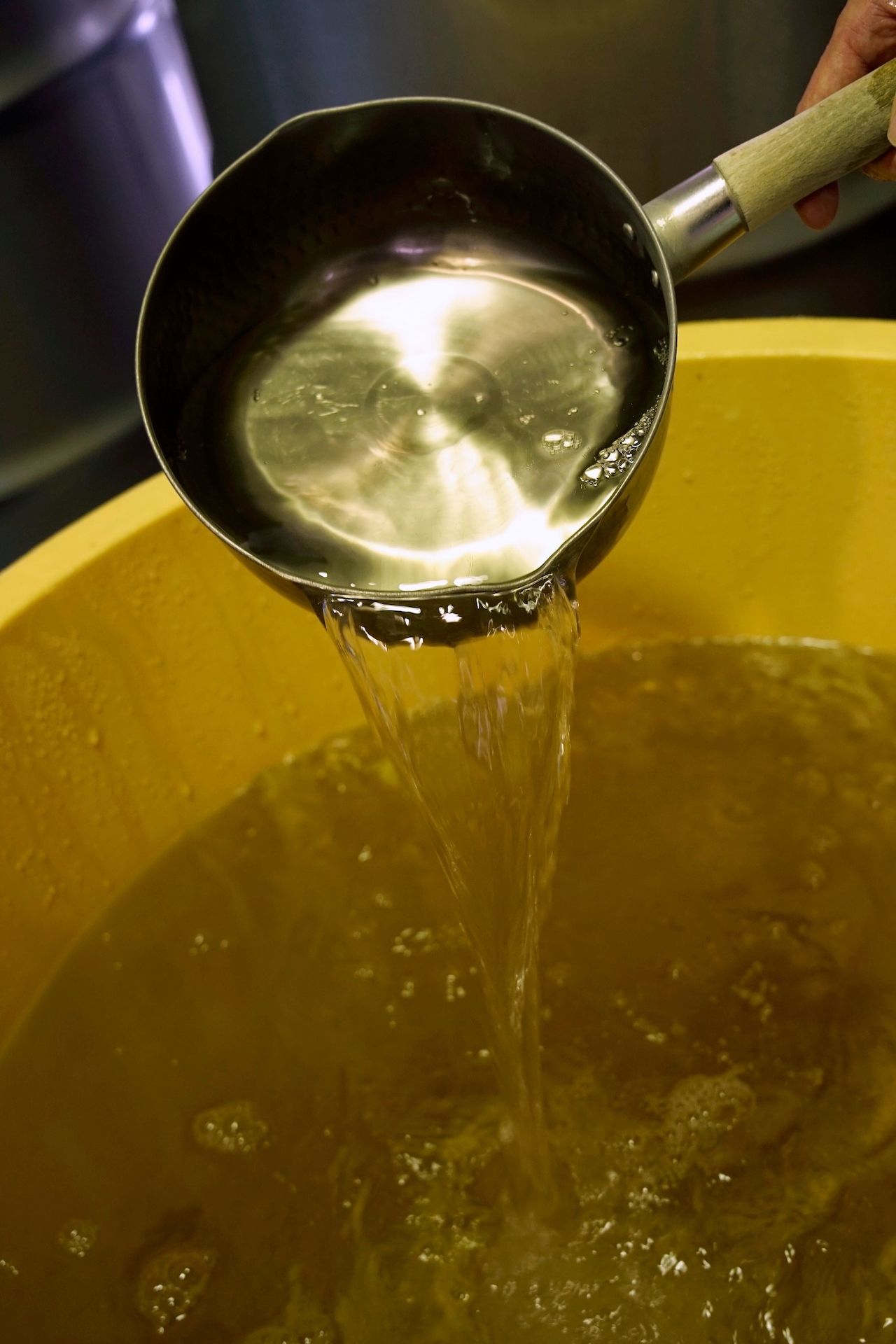
Aku is clear, but as a strong base it requires caution in handling (© Ukita Yasuyuki)
In its final form, Kurozake has a light caramel color—a product of the interaction of sugars and amino acids —and an alcohol content between 13.5% and 14.5%. It presents a slightly bittersweet aroma similar to dates, with notes of grain husks, dried flowers, hay, and herbs. Slightly viscous, it has a mild sweetness and umami-rich flavor that gives way to a subtle bitter aftertaste.
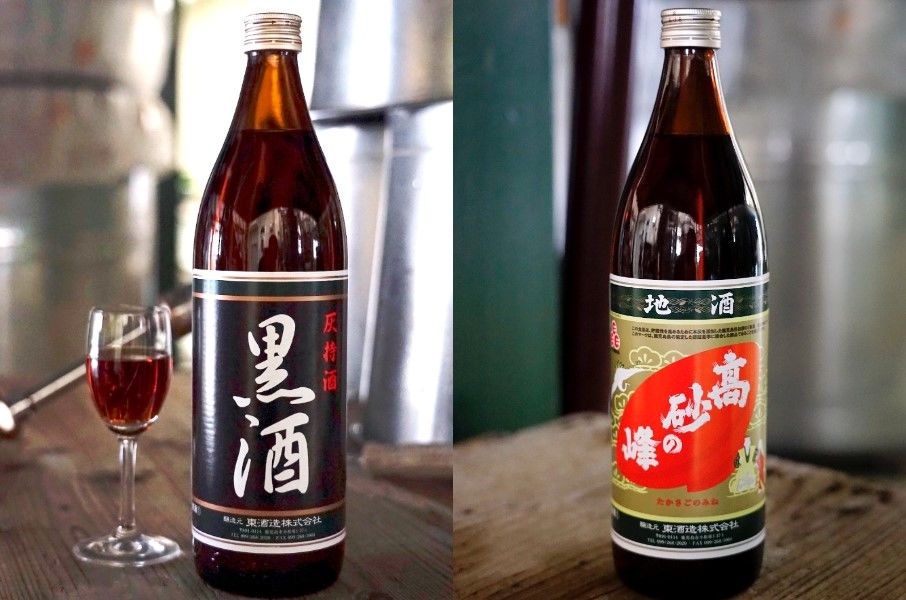
Higashi Shuzō’s akumochizake labels Kurozake (left) and Takasago no Mine tap into Japan’s more than 1,200-year tradition of brewing kuroki. (© Ukita Yasuyuki)
Kurozake owes its savory flavor to an abundance of glutamic acid and other amino acids. Fukumoto says that joint analysis with Kagoshima University Associate Professor Katō Sanae and others found 18 types of amino acids, which work together to give the brew its complex, deep flavor. This is more than double the amino acids found in most commercially available mirin. It also has a higher sugar content, nearly 60% more, with the various sugars producing the sake’s characteristic, well-balanced sweetness.
These attributes, combined with its enzymes and alcohol content, make Kurozake a versatile seasoning. Used in satsuma-age, it enhances the flavor and aroma of the fish paste while adding to the color, chewiness, and mouthfeel. Used with soy sauce, it can take the place of sake and mirin, basic seasonings in so many Japanese dishes.
A Savory Splash
Higashi Shuzō ships most of its output of Kurozake to food manufacturers and restaurants. Makers of satsuma-age make up the bulk of its clients, but a range of businesses, ranging from soba shops to gyōza outlets to seafood processors, covet the sake’s flavor enhancing and other properties.
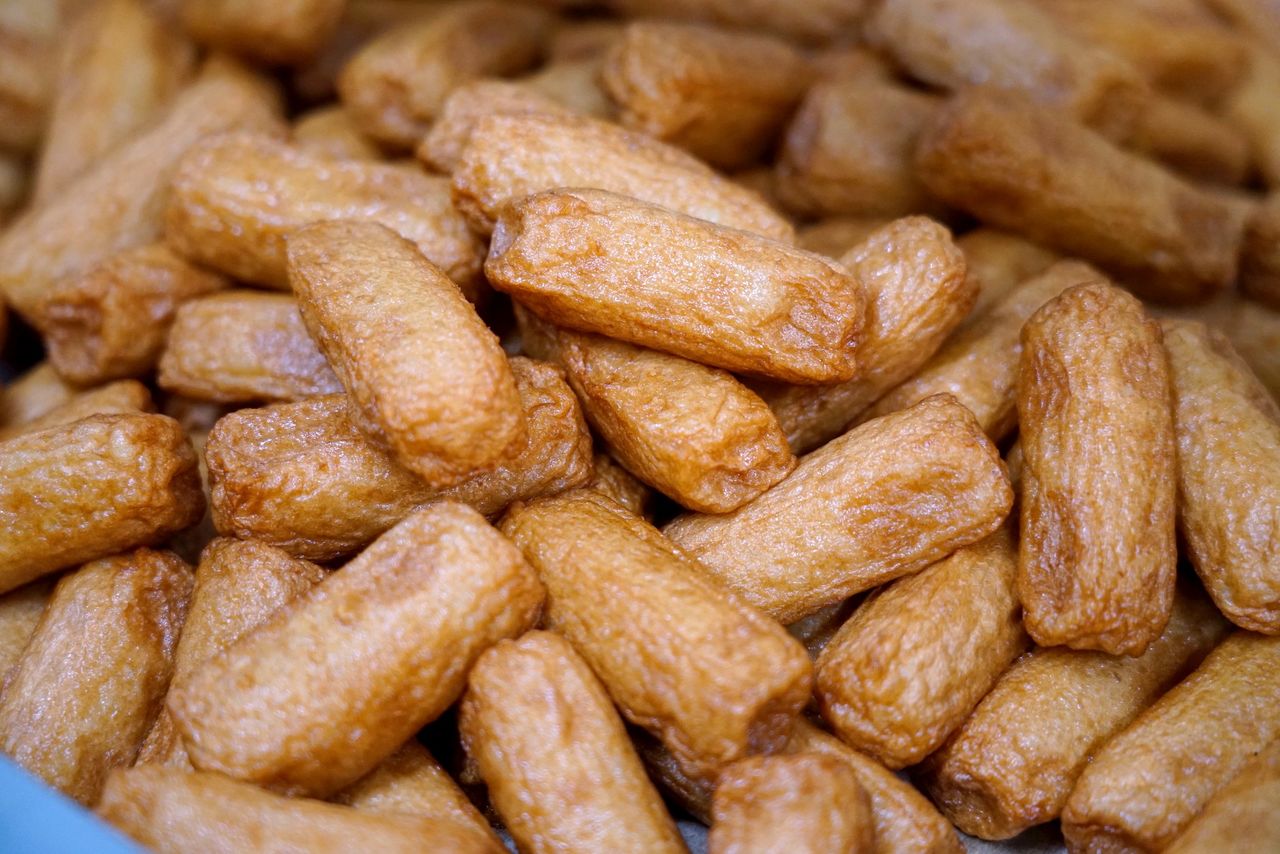
Freshly fried satsuma-age. Kurozake adds to the texture and color of the delicacy. (© Ukita Yasuyuki)
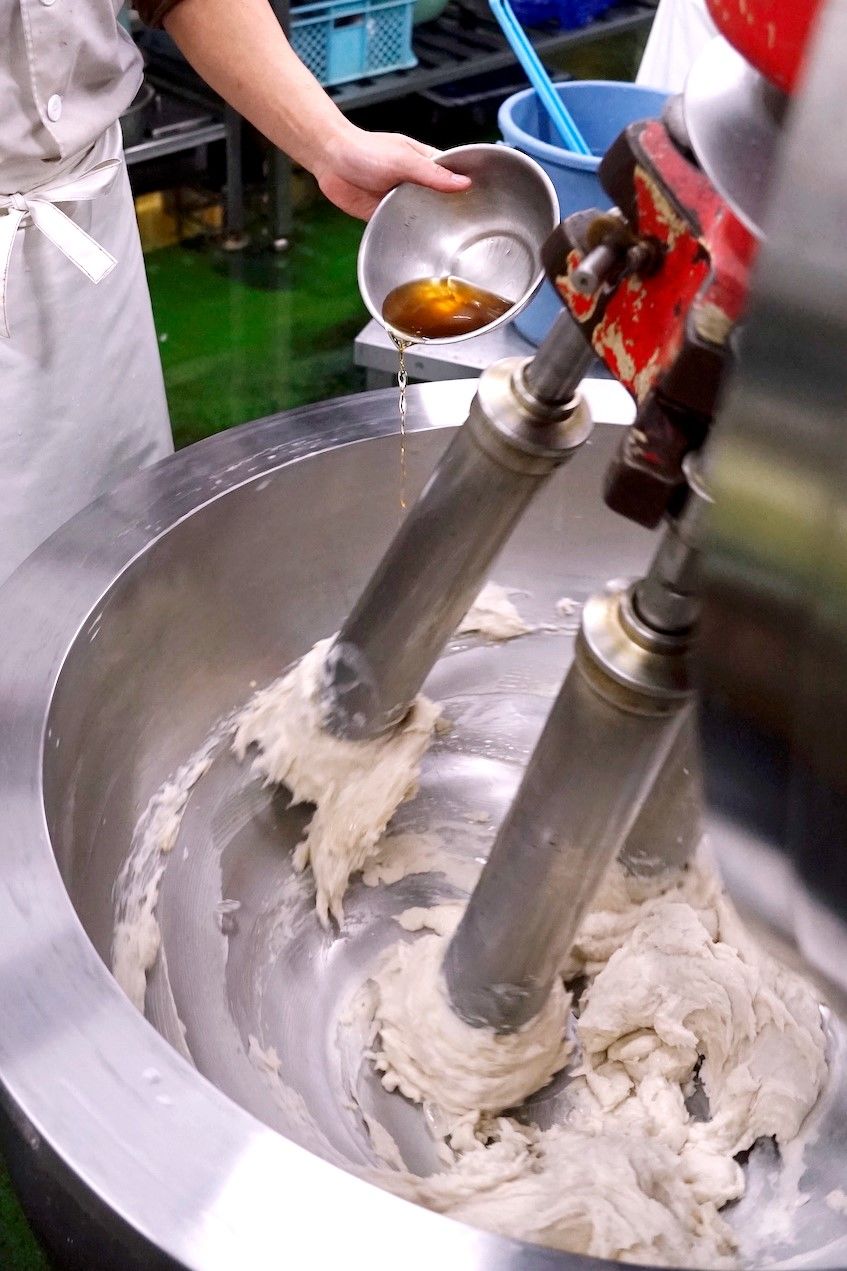
Kurozake is added to fish paste. (© Ukita Yasuyuki)
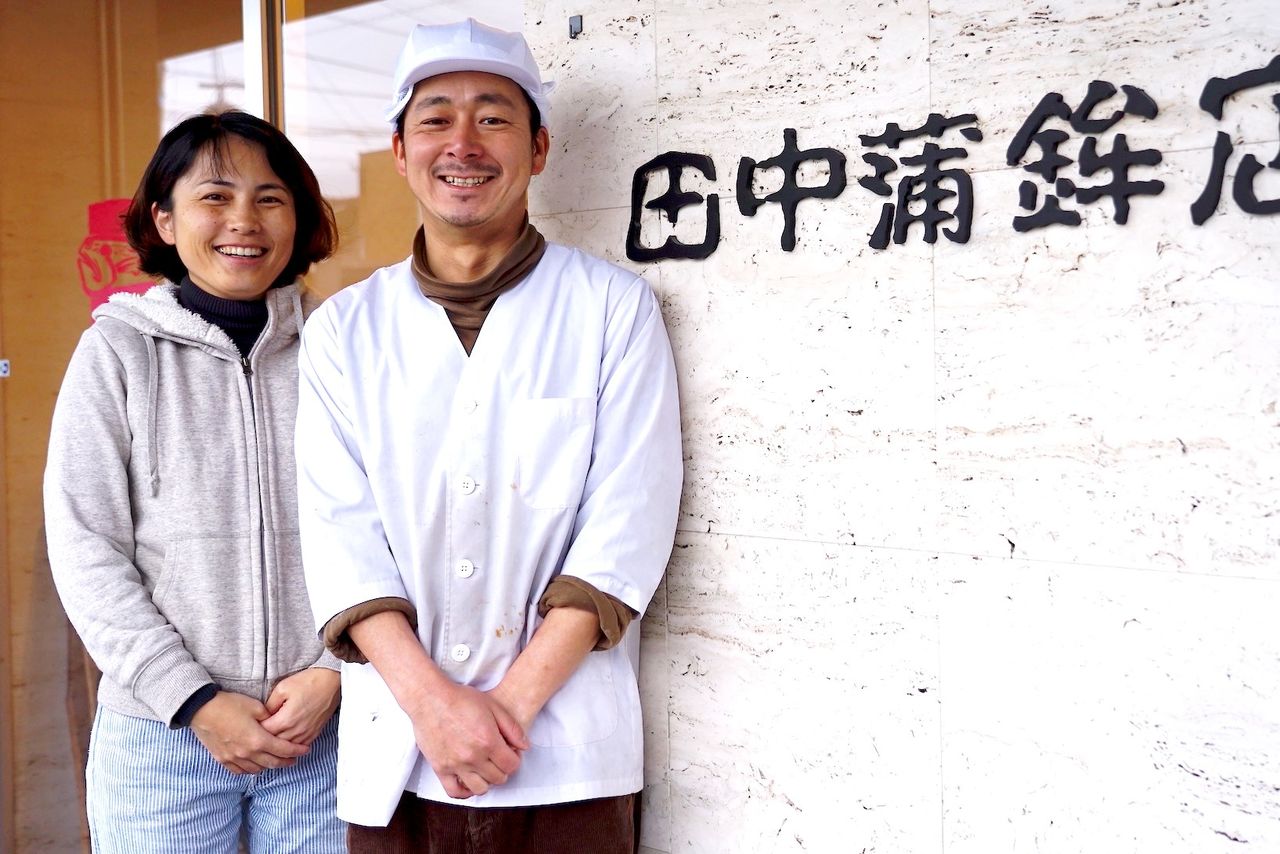
Husband and wife duo Tanaka Kenta (right) and Naoko run Tanaka Kamaboko, a manufacturer that has relied on kuroki as a key ingredient for generations. (© Ukita Yasuyuki)
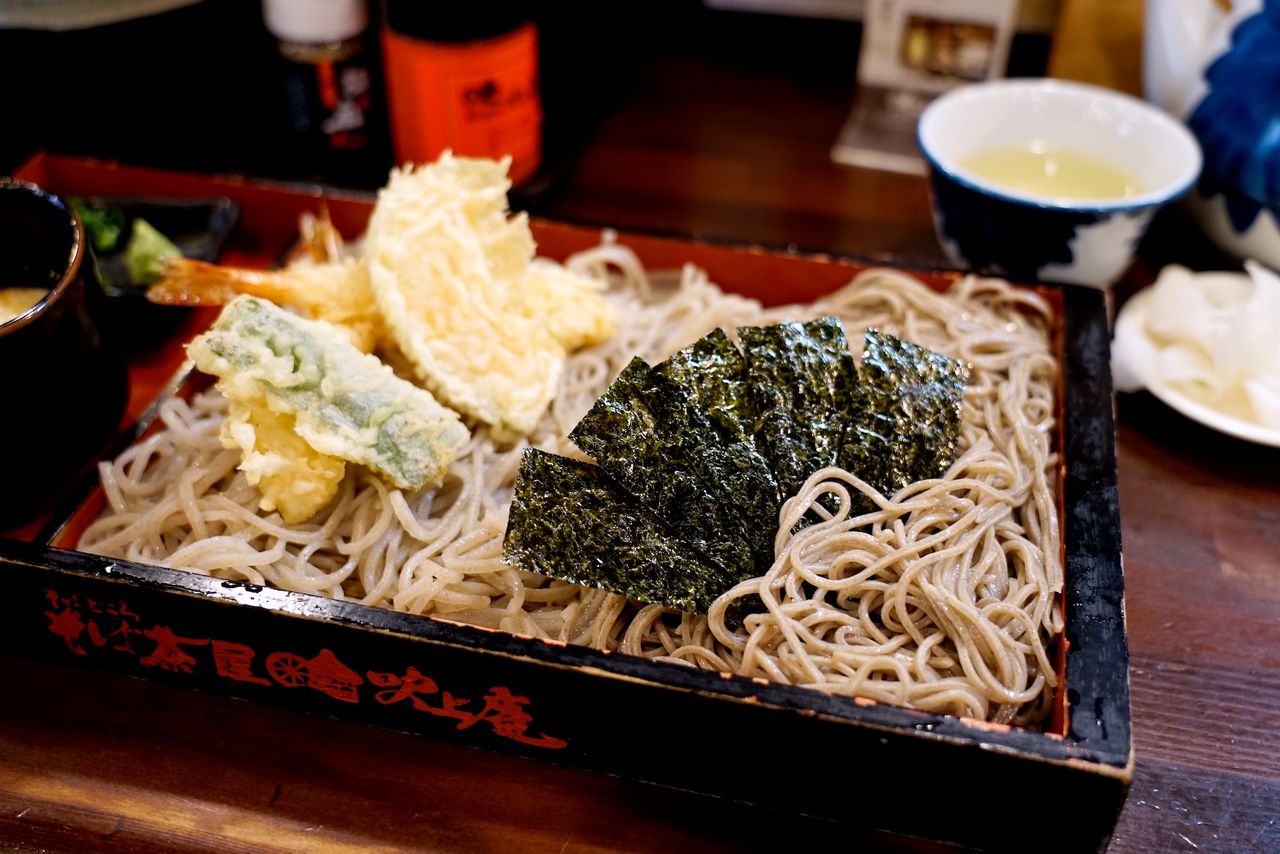
Soba shop Fukiage-an in Kagoshima adds Kurozake to water for chilling boiled noodles to help lock in flavor. (© Ukita Yasuyuki)
Sushi Yoshitake, a restaurant in Tokyo’s Ginza district boasting two stars in the Michelin Green Guide, is among Kurozake’s loyal stalwarts. Owner Yoshitake Masahiro has even appeared on television singing the sake’s praises, saying that he uses it when preparing eel as it makes the meat moist and tender.
Curious about the array of culinary claims, I purchased a bottle of Kurozake and used it to season stewed items and soups. It did not disappoint. Following Fukumoto’s advice, I used just a splash to bring out the fullness of dishes—even to curry. It also helped foods retain their flavor long after they had cooled.
Kurozake’s use of all-natural ingredients, its traditional brewing process, and its umami- and enzyme-rich properties align nicely with modern culinary trends. It might even harbor yet undiscovered health benefits, as suggested by Fukumoto, who recounts how the founder of the brewery remained active until his death at the age of 102. If more people in Japan and elsewhere learn of the flavor enhancing properties of Kurozake, it stands to become the next big thing in Japanese cuisine.
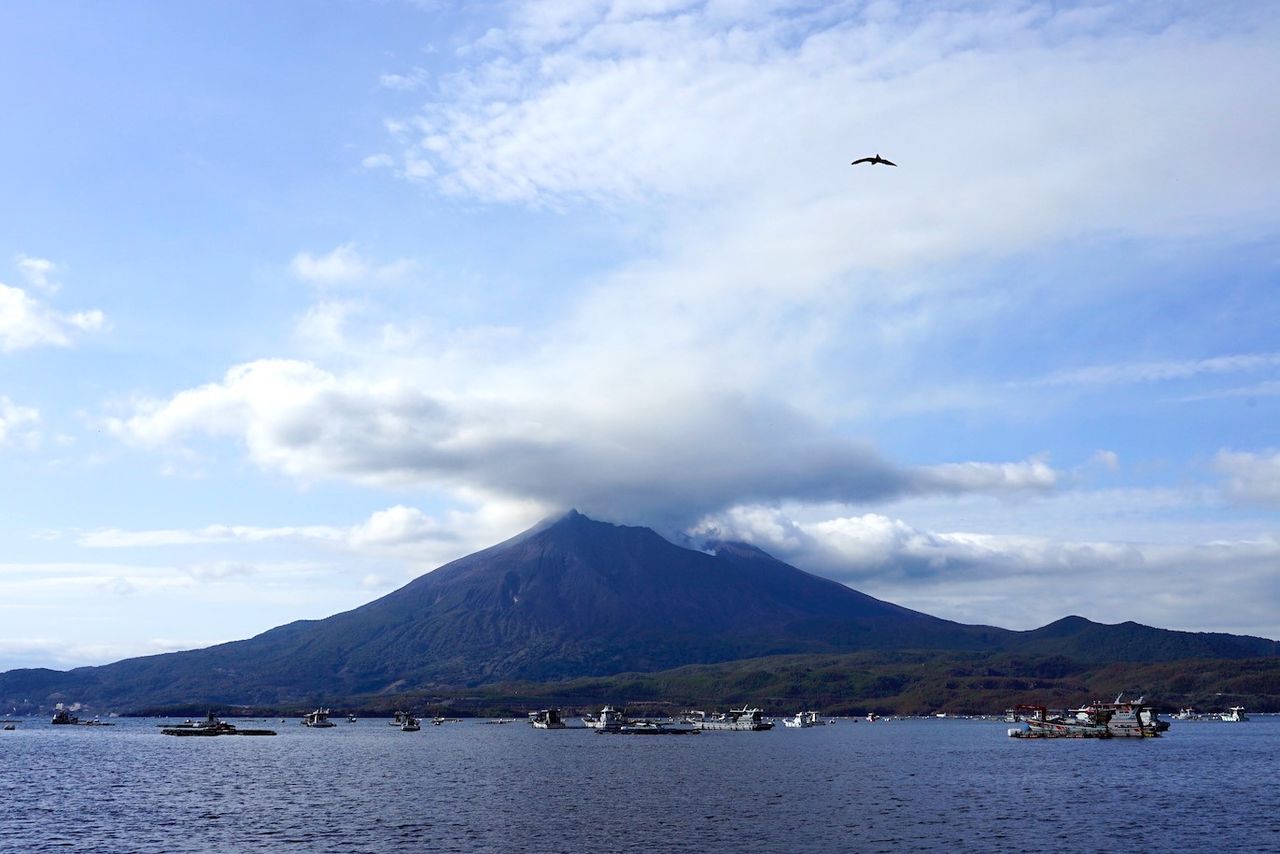
Smoke rises from the volcano Sakurajima, which watches over Higashi Shuzō. (© Ukita Yasuyuki)
(Originally published in Japanese. Banner photo: Kurozake is mixed into rice for making sushi. © Ukita Yasuyuki.)
